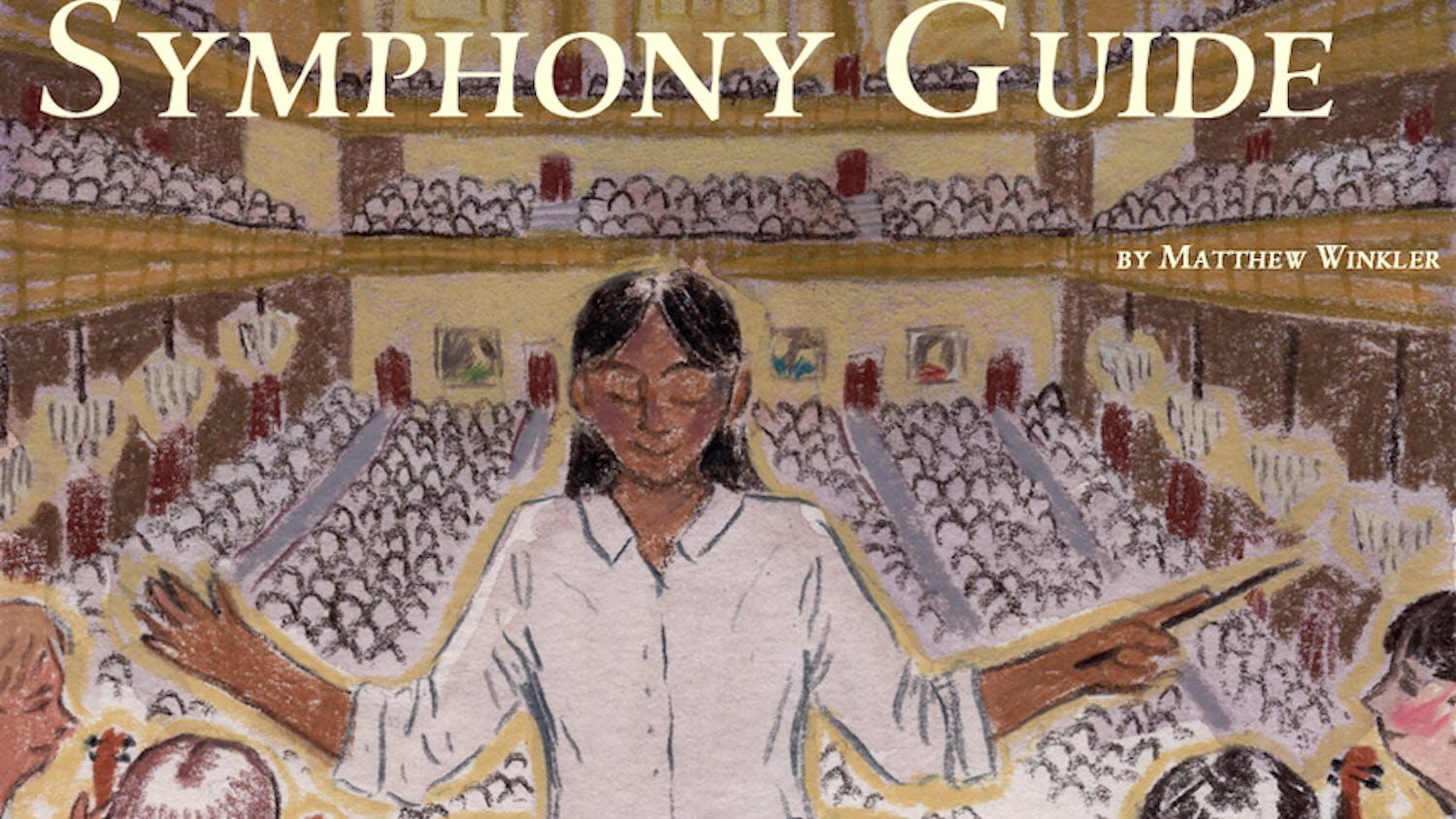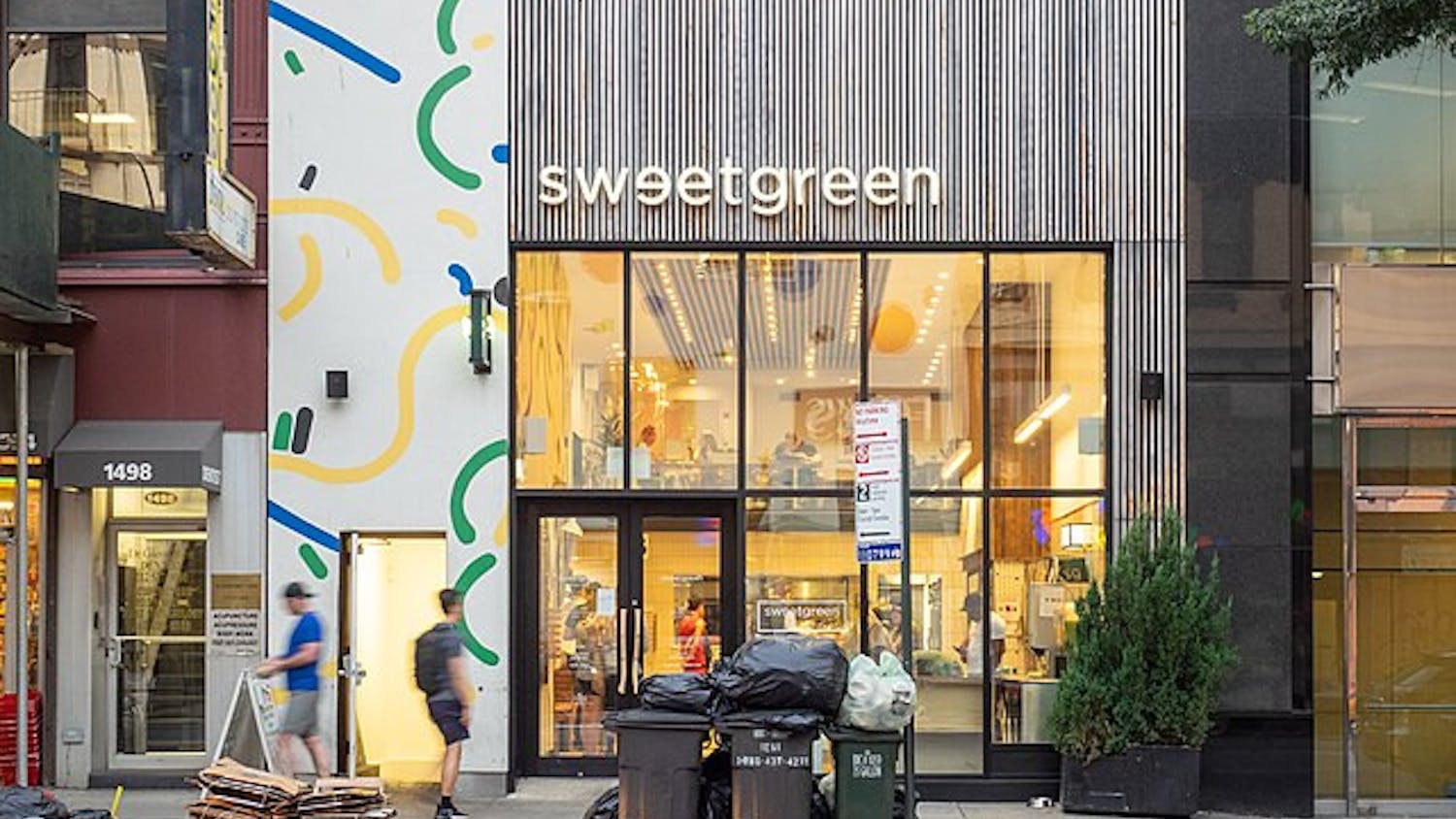As any child with progressive, well-meaning parents knows, there is one hour per week whose anticipation rivals only the picking of dodgeball teams in terms of dread: the mandatory music lesson. By now, beyond the occasional plucking out of "Fur Elise" on the family piano at Christmastime, the average one-time musical prodigy has let his training fall to the wayside. It started early: The first time you heard your cousin's Red Hot Chili Peppers tape blasting out of her pink Casio boombox, your parents knew their dreams of raising the next Chopin were doomed. Back in the heady years of the '90s, once a kid discovered rock and roll (or Salt-n-Pepa), the classical composers were as lost to her as the friend she Red-Rovered across the playground.
Luckily for today's concerned parents, in 2005 a love for rock music doesn't mean shoving the sheet music and metronome among the dust bunnies under the bed. Popular artists have started to incorporate traditional styles with increasing frequency. One going to see Sigur Ros next week will find himself in Liverpool's Philharmonic Hall, listening to haunting melodies every bit as effective as one of Puccini's arias; fans of the White Stripes heard them hammer out stripped-down blues tunes in Boston's Opera House this September.
The latest band to throw their chapeau into the ring of traditional musical stylings is Montreal's Bell Orchestre. In an interview with the Daily, bass player Richard Reed Parry mused on this trend toward the past: "I guess if the majority of popular and art music moves far enough away from traditional music, it has to move back towards it eventually, and it's the kind of thing where if a few people start bringing the older, traditional influences back to the table during a time when those sounds are conspicuously absent, then it can catch on really quickly and it takes on this appearance of being a revivalist thing, or a movement of some sort."
Fittingly, this group of modern classicists is performing this Friday at one of the nation's most revered art centers: Boston's Museum of Fine Arts. The MFA's mix of antique and contemporary pieces serves as a perfect parallel to this classical band, which formed in a less traditional, more natural way than most.
The Bell Orchestre Catches Some Arcade Fire
The Bell Orchestre originally came together in 1999. Parry met violinist Sarah Neufeld when they were in school together. Enlisting the drum power of Stefan Schneider, the group began to collaborate with other artists, accompanying modern dance shows, films, and even puppet theater.
After a few performances, the trio added more players: Pietro Amato on French horn and Kaveh Nabatan on trumpet. It wasn't until the incorporation of the horns that the classical collective really began to see themselves as a band and came up with their name.
Does any of this ring a bell? It should: Parry and Neufeld are also members of the immensely popular rock band the Arcade Fire. While the Arcade Fire has gained more media attention, however, Parry insists that the Bell Orchestre is just as important and is indeed "a real band, a 'full time' band."
Though the Orchestre has been around for six years, they didn't record their first album, "Recording a Tape the Colour of Light," until about a year and a half ago. This delay is due in part, Parry admits, to the "general madness" of the Arcade Fire success but is also due to the fact that the group was never interested in being "a normal band, one that makes records and tours." Instead, he says, they started to "just make music to make music."
"We didn't really start out with the aim of making records - as a group we didn't really share the same reference points or musical goals at first, but then the music started to really reveal itself, and gather momentum. I guess we waited until an album needed to be made, rather than just trying to get any old thing together and put it out into the world."
Though the final decision to record an album would seem to align the band with more commercial rock acts than with traditional orchestral ensembles, Parry insists that, despite the band's moments of intensity, it is not a rock group: "I guess I just wanted to have a band that from the get go didn't have to try hard to get away from sounding like normal rock music - something that was by nature far more delicate, but that could rock really hard as well - equal parts fragility and tension and heaviness and beauty and rawness and melodies."
Getting Classy
One of the marks of the album's (and, indeed, the band's) uniqueness is its sound effects: for "Recording a Tunnel (The Horns Play Underneath the Canal)," the band did just what the song's title suggests, camping out under a real tunnel to record the noise of rushing water. Citing this willingness to work outside the conventions of modern rock, Schneider, in a separate interview with the Daily, corroborated Parry's image of the group as atypical in today's musical landscape: "We're super open for different settings, not settings like those of a traditional rock band. It's easier in those situations to be more creative."
According to Schneider, who described his setup as "a traditional drum set plus toys" which include pots and chains, the band's openness is also visible in its collaborative process.
"Everything we compose is collectively composed," he said. "No one really brings in music. That's one thing that makes our band have a 'band' sound, that everyone contributes freely."
Each member, Schneider went on to say, offers suggestions, which take a variety of forms. "Sometimes [they're] detailed suggestions, but sometimes just more of an overall conceptual idea or a feeling, an emotional idea of where we want the song to be, dictates the shape that each instrument will take."
Listening to "Recording a Tape the Colour of Light," one can begin to see the music in terms of emotional vignettes. The horns of "Nuevo," for example, are exotic and regal, like the fanfare of a king entering his palace. "Les Lumi???s, Part 2," with its violently sawing strings and its dry, metallic percussion that sounds like a cook frantically throwing handfuls of rice into an empty pot, should be the soundtrack to a heist sequence in an artsy foreign film.
In fact, all of "Recording a Tape" lends itself to this kind of cinematic interpretation: In "Salvatore Amato," the heavens open up as the angels grab mallets and attack the glockenspiel. "Les Lumi??"?s, Part 1" is a farmhouse in the morning, with bells shaking around in empty milk bottles, strings withering up in the heat of the rising sun, and horns braying like horses. In "Throw It On the Fire," firefighters knock over a rack of helmets in their haste to rescue the squealing dolphins and whales (again, the horns) from their burning Sea World.
The complexity of "Throw It On the Fire" is a good way to revisit the band's unique sound effects: the song features the roaring rise and fall of a siren. One might wonder how the band will recreate the track without pulling the MFA's fire alarm, but Schneider revealed that the effect is actually created by Amato's French horn.
Staying Classy
Though the Bell Orchestre's sound is primarily faithful to their live performance, there are a few things they can't physically recreate on stage. One difference between the album and the live show, Schneider said, "is that there might be some overdubs. It's doubled in the bell parts, because live we don't have enough hands [to play all of them.]" He also conceded another limitation of the MFA's Remis Auditorium: "Obviously we're not bringing a tunnel in with us, but we have some of it recorded."
Despite some pangs of disappointment at the MFA's inability to host an actual canal inside its walls, both Parry and Schneider are excited to be playing in this slightly unorthodox arena. Schneider emphasized the band's desire to play in smaller venues (their first performance was in a Montreal yoga studio): "We like nice acoustic spaces that are more intimate because the music we play is intimate and we like to bring people in and take them on a journey with our music. The whole environment is a big part of that."
Parry agreed, emphasizing the emotional weight of the band's show: "The museum and gallery shows are great because there's a sort of undivided attention that we get that I think can be really rewarding, for band and audience alike... It just gives this whole richness of context to the whole thing... It's pretty great when you wander out of a show and you're right in the middle of somewhere beautiful or interesting. I've had really great experiences like that, where a show just completely floors me and then I go outside and there's a huge beautiful old church all lit up. It's so special when sometimes a place can really just tie a musical or emotional experience to something visually memorable."
"





